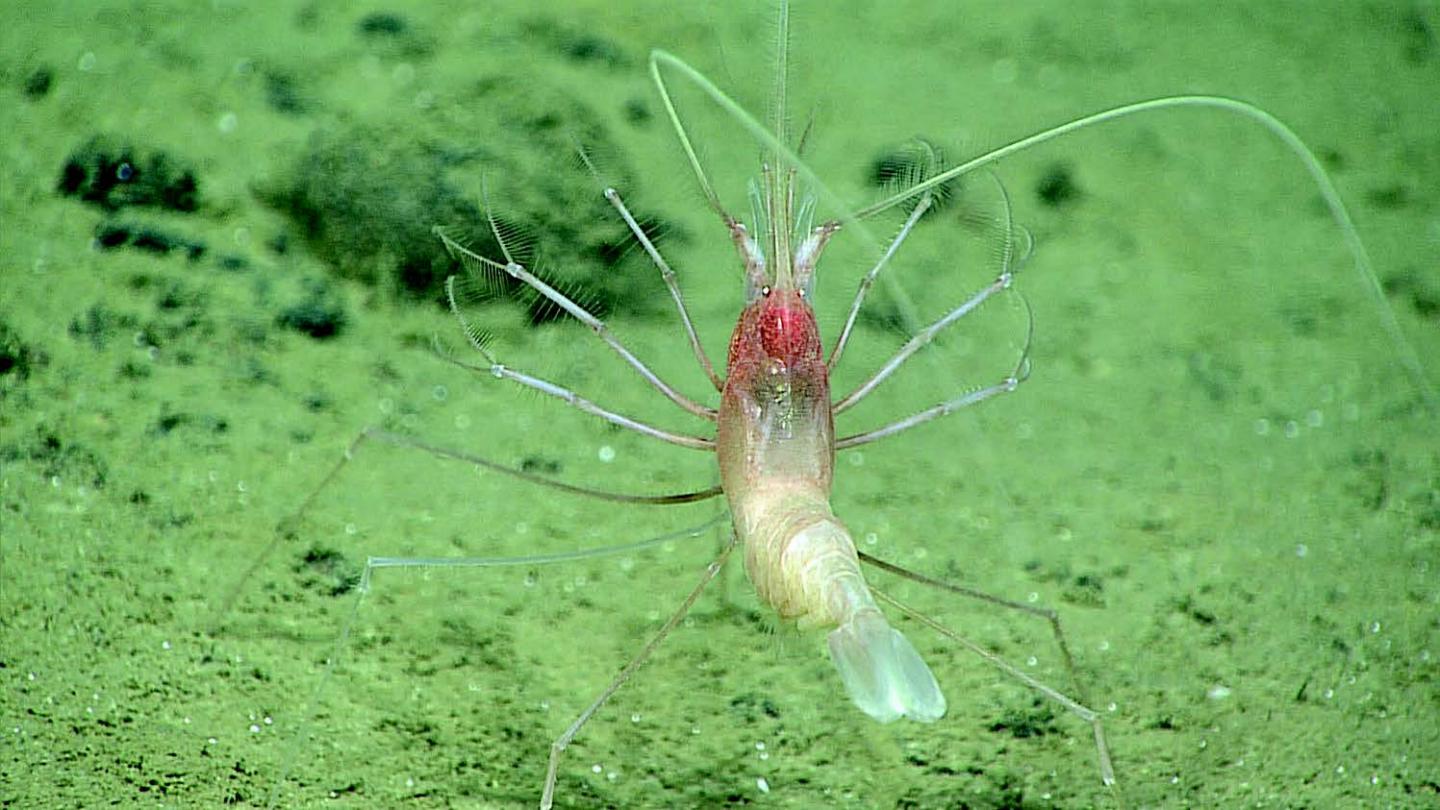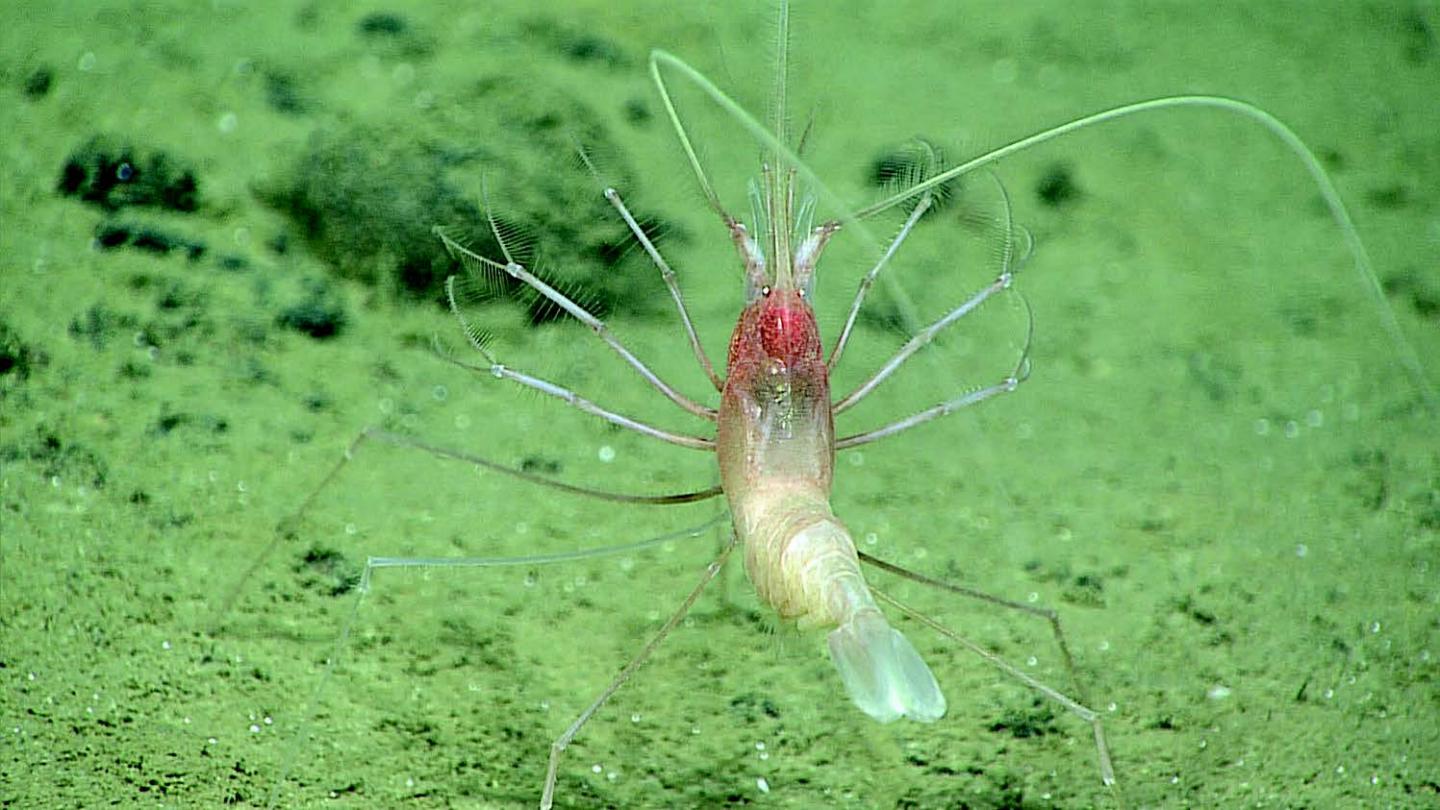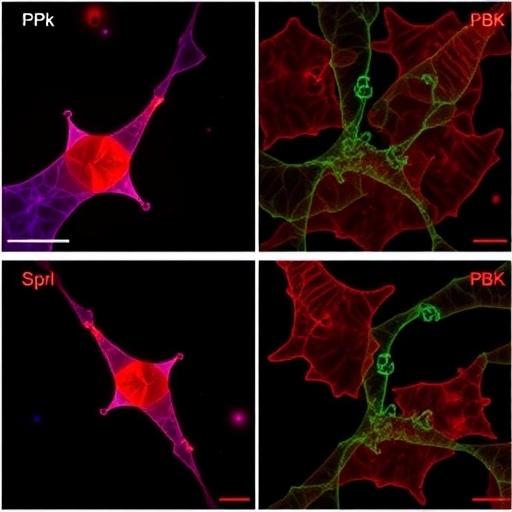
Credit: Dr. Mary Wicksten
Depths such as those at the Marianas Trench Marine National Monument are an extreme challenge for explorers, providing scarce information about their inhabitants, let alone their behavior.
While most of them are known from dead specimens gathered by trawls, a team of scientists, led by Dr. Mary Wicksten, Texas A&M University, USA, have recently retrieved footage of a living shrimp from the seafloor at a striking depth of 4826 m. The video presumably shows a species, previously known from a single broken specimen from the Coral Sea, while filter-feeding. The observation is published in the open access journal ZooKeys.
With the help of the remotely operated vehicle Deep Discoverer, part of the equipment the U.S. National Oceanographic and Atmospheric Administration (NOAA) have used in the "2016 Exploration of the Marianas" expedition, the researchers have obtained the first footage of a living deep-sea benthic shrimp of the Stylodactylidae family. In fact, the video was of such high-quality that the scientists believe they have recognised the shrimp at a species level (Bathystylodactylus bathyalis). This is also the deepest record for this group of shrimps.
Navigating through the seafloor, mostly thickly sedimented with clay-like particles easily disturbed into clouds, the Deep Discoverer spent nearly five hours traversing the bottom, letting the scientists at the shore observe depths ranging from 4840 to 4787 meters. When it reached 4826 m, it approached a tiny shrimp measuring about 120 mm in length.
As soon as they noticed it, the researchers moved the vehicle so that it could face the shrimp and take some detailed shots. At first, the crustacean was seen to stay immobile facing the current for a few minutes, before raising to its back legs and beginning to use the front ones to form what seems to be a "filter basket" that captures particles. Curiously, while such passive feeding behavior is known from some crabs, it has not been observed within any group of carideans, the shrimp infraorder where the studied species belongs.
NOAA's ship Okeanos Explorer, administered through the Office of Exploration and Research and used in the deep-water expedition, is equipped with the remotely-operated vehicle Deep Discoverer and a camera sled. It relies on two maneuverable and four fixed video cameras, as well as 26 LED lamps. High-speed communication capabilities enable scientists to participate in ship operations via telepresence. Thanks to this technology, anyone with Internet access is able to observe live video feeds from and participate in real time via a private chat room and satellite teleconference line.
Okeanos Explorer is to be employed once again in 2017 to continue its explorative mission focused on deepwater areas of U.S. marine protected areas in the central and western Pacific.
###
Original source:
Wicksten M, De Grave S, France S, Kelley C (2017) Presumed filter-feeding in a deep-sea benthic shrimp (Decapoda, Caridea, Stylodactylidae), with records of the deepest occurrence of carideans. ZooKeys 646: 17-23. https://doi.org/10.3897/zookeys.646.10969
Media Contact
Dr. Mary Wicksten
[email protected]
@Pensoft
http://www.pensoft.net
############
Story Source: Materials provided by Scienmag





